Wildflowers, Grasses and Other Nonwoody Plants
Media

Species Types
Scientific Name
Oenothera biennis
Description
True to its name, common evening primrose is the most common and widespread evening primrose in Missouri. It is most noticeable late in the season, when it reaches its greatest height and the flowers at the top are most visible.
Media

Species Types
Scientific Name
Hypoxis hirsuta
Description
Yellow star grass grows throughout the tallgrass prairie region. Imagine the thoughts of pioneers when they gazed upon these bright little lilies during stops along their westward journey!
Media
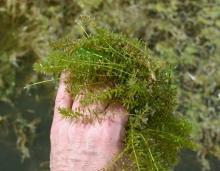
Species Types
Scientific Name
Hydrilla verticillata
Description
Hydrilla is probably the worst submersed aquatic weed in America. It harms aquatic communities in small ponds, lakes, and rivers. It hurts our economy by hindering fishing and other recreational uses in large reservoirs. Learn about it and prevent its spread.
Media
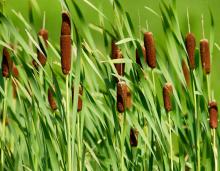
Species Types
Scientific Name
Typha spp.
Description
Missouri’s cattails are all tall wetland plants with narrow, upright leaves emerging from a thick base, and a central stalk bearing a brown, sausage-shaped flower spike.
Media
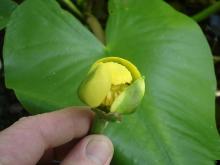
Species Types
Scientific Name
Nuphar advena (formerly N. lutea)
Description
Spatterdock is a native aquatic plant with deep yellow, saucer-or globe-shaped flowers to 3 inches across. It grows in ponds, lakes, and slow-moving to stagnant portions of streams, rivers, and spring branches.
Media
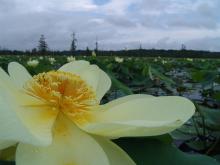
Species Types
Scientific Name
Nelumbo lutea
Description
American lotus is an aquatic plant with circular leaves that are held above water. The large yellow flowers have an interesting showerhead-like disk at the center.
Media

Species Types
Scientific Name
Chara spp.
Description
These aquatic algae look like regular vascular plants. Chara has a crisp, gritty texture, a musky odor, and gray-green, needlelike structures that resemble leaves.
Media
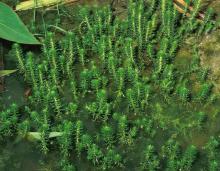
Species Types
Scientific Name
Myriophyllum spp.
Description
Water milfoils are feathery aquatic plants that grow rooted in shallow water. Their tips emerge above the waterline and bear bladelike, toothed leaves.
Media

Species Types
Scientific Name
Najas spp.
Description
Naiads are slender, narrow-leaved plants that grow completely under water and are rooted to the bottom. They never have broad, floating leaves or conspicuous flowers or seed heads.
Media
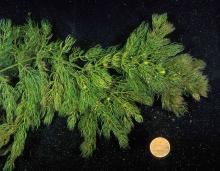
Species Types
Scientific Name
Ceratophyllum demersum
Description
Coontail, a common submerged aquatic plant, got its name from the crowded upper leaves, which make the stem tip appear bushy like the tail of a raccoon.
See Also
About Wildflowers, Grasses and Other Nonwoody Plants in Missouri
A very simple way of thinking about the green world is to divide the vascular plants into two groups: woody and nonwoody (or herbaceous). But this is an artificial division; many plant families include some species that are woody and some that are not. The diversity of nonwoody vascular plants is staggering! Think of all the ferns, grasses, sedges, lilies, peas, sunflowers, nightshades, milkweeds, mustards, mints, and mallows — weeds and wildflowers — and many more!





















